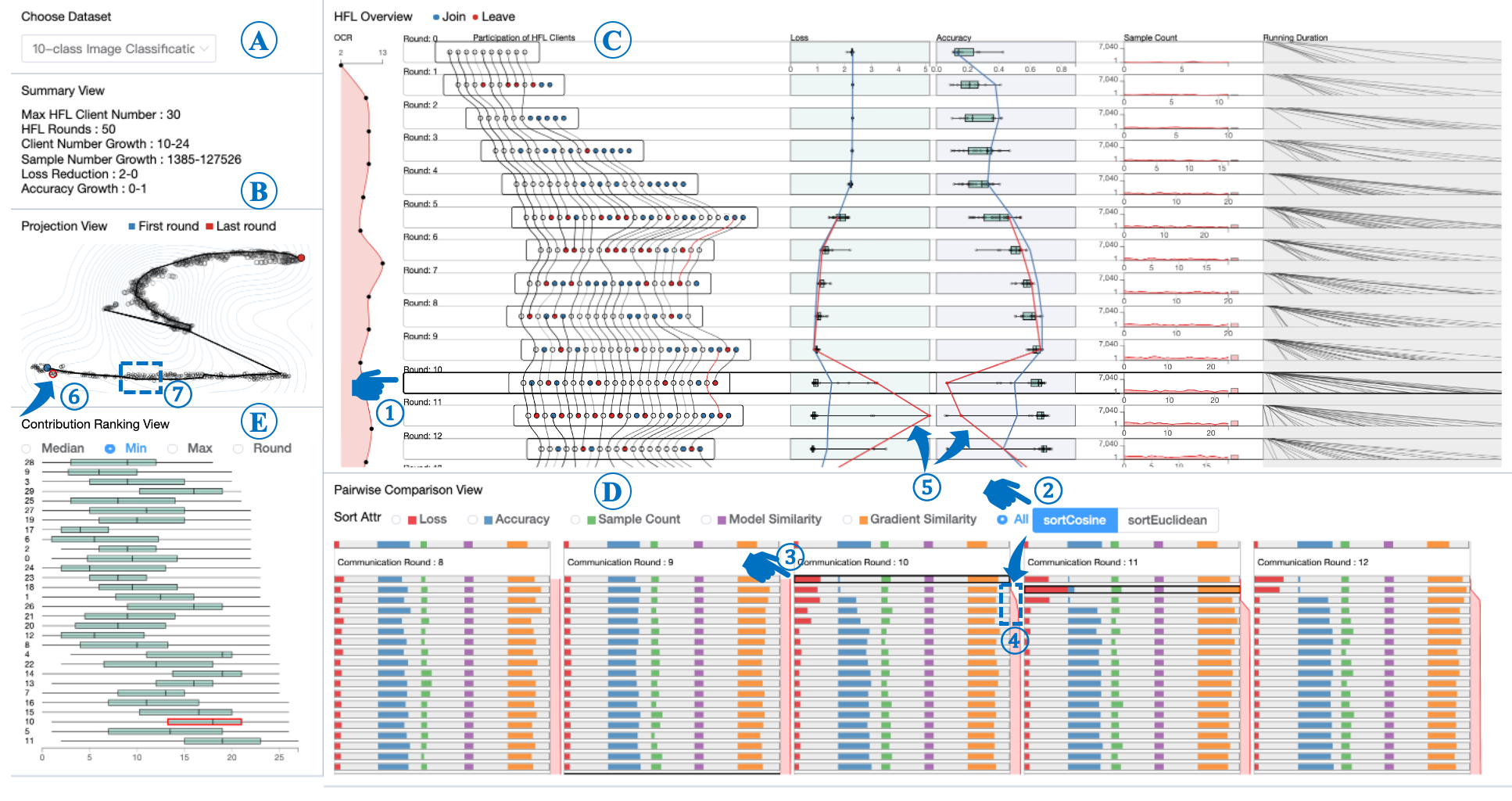Inspecting the Running Process of Horizontal Federated Learning via Visual Analytics
Quan Li, Xiguang Wei, Huanbin Lin, Yang Liu, Tianjian Chen, Xiaojuan Ma
External link (DOI)
View presentation:2021-10-29T15:00:00ZGMT-0600Change your timezone on the schedule page
2021-10-29T15:00:00Z

Fast forward
Direct link to video on YouTube: https://youtu.be/tdm7-8jS3ww
Keywords
Federated learning, anomaly detection, contribution assessment, visualization
Abstract
As a decentralized training approach, horizontal federated learning (HFL) enables distributed clients to collaboratively learn a machine learning model while keeping personal/private information on local devices. Despite the enhanced performance and efficiency of HFL over local training, clues for inspecting the behaviors of the participating clients and the federated model are usually lacking due to the privacy-preserving nature of HFL. Consequently, the users can only conduct a shallow-level analysis of potential abnormal behaviors and have limited means to assess the contributions of individual clients and implement the necessary intervention. Visualization techniques have been introduced to facilitate the HFL process inspection, usually by providing model metrics and evaluation results as a dashboard representation. Although the existing visualization methods allow a simple examination of the HFL model performance, they cannot support the intensive exploration of the HFL process. In this study, strictly following the HFL privacy-preserving protocol, we design an exploratory visual analytics system for the HFL process termed HFLens, which supports comparative visual interpretation at the overview, communication round, and client instance levels. Specifically, the proposed system facilitates the investigation of the overall process involving all clients, the correlation analysis of clients' information in one or different communication round(s), the identification of potential anomalies, and the contribution assessment of each HFL client. Two case studies confirm the efficacy of our system. Experts' feedback suggests that our approach indeed helps in understanding and diagnosing the HFL process better.